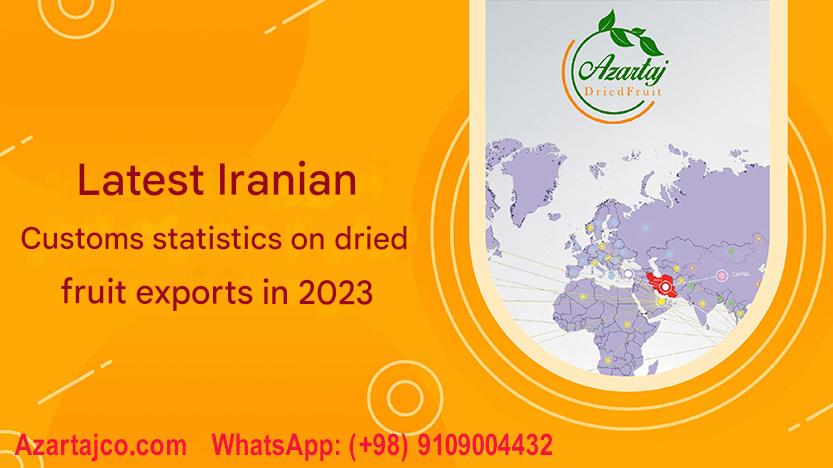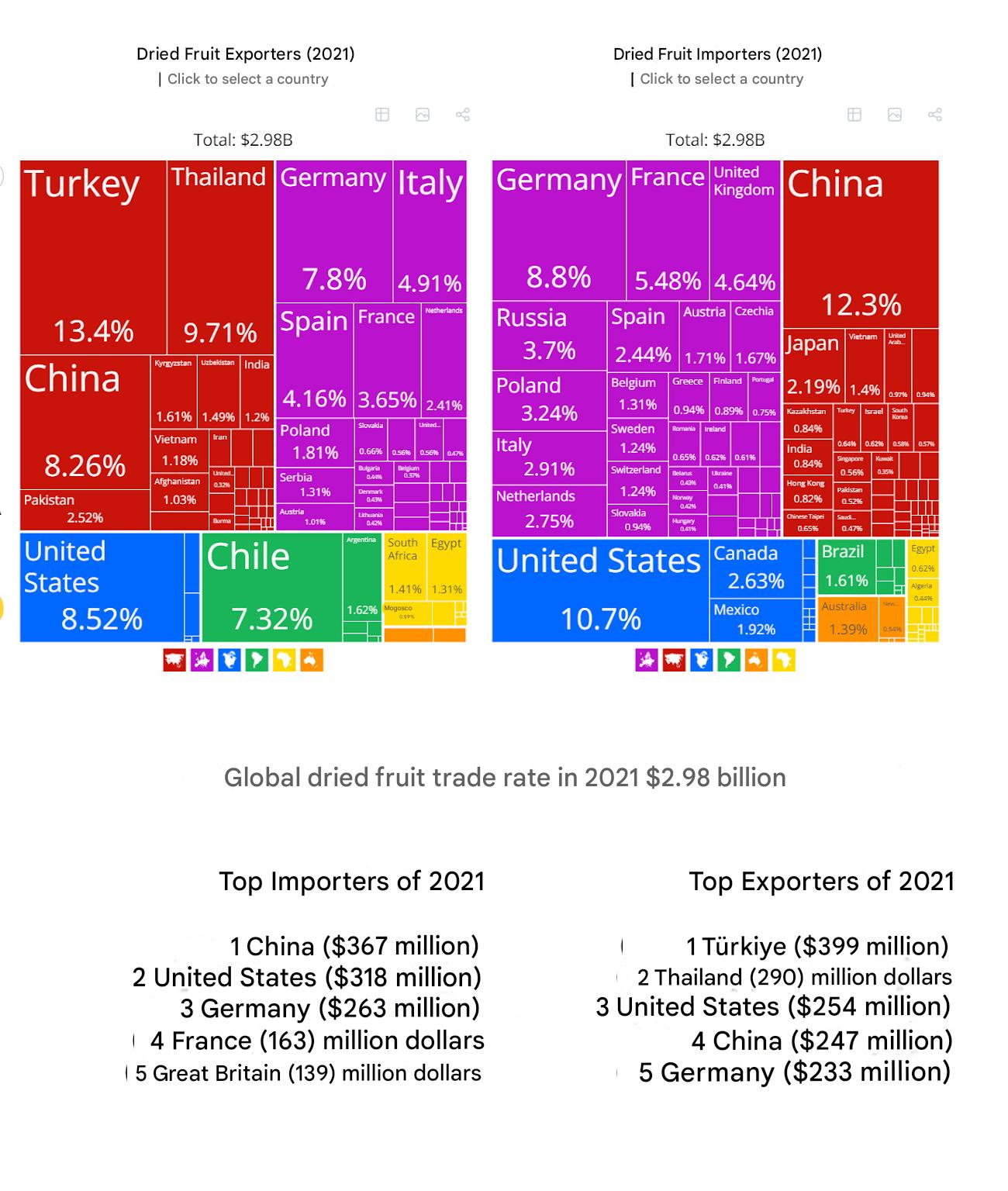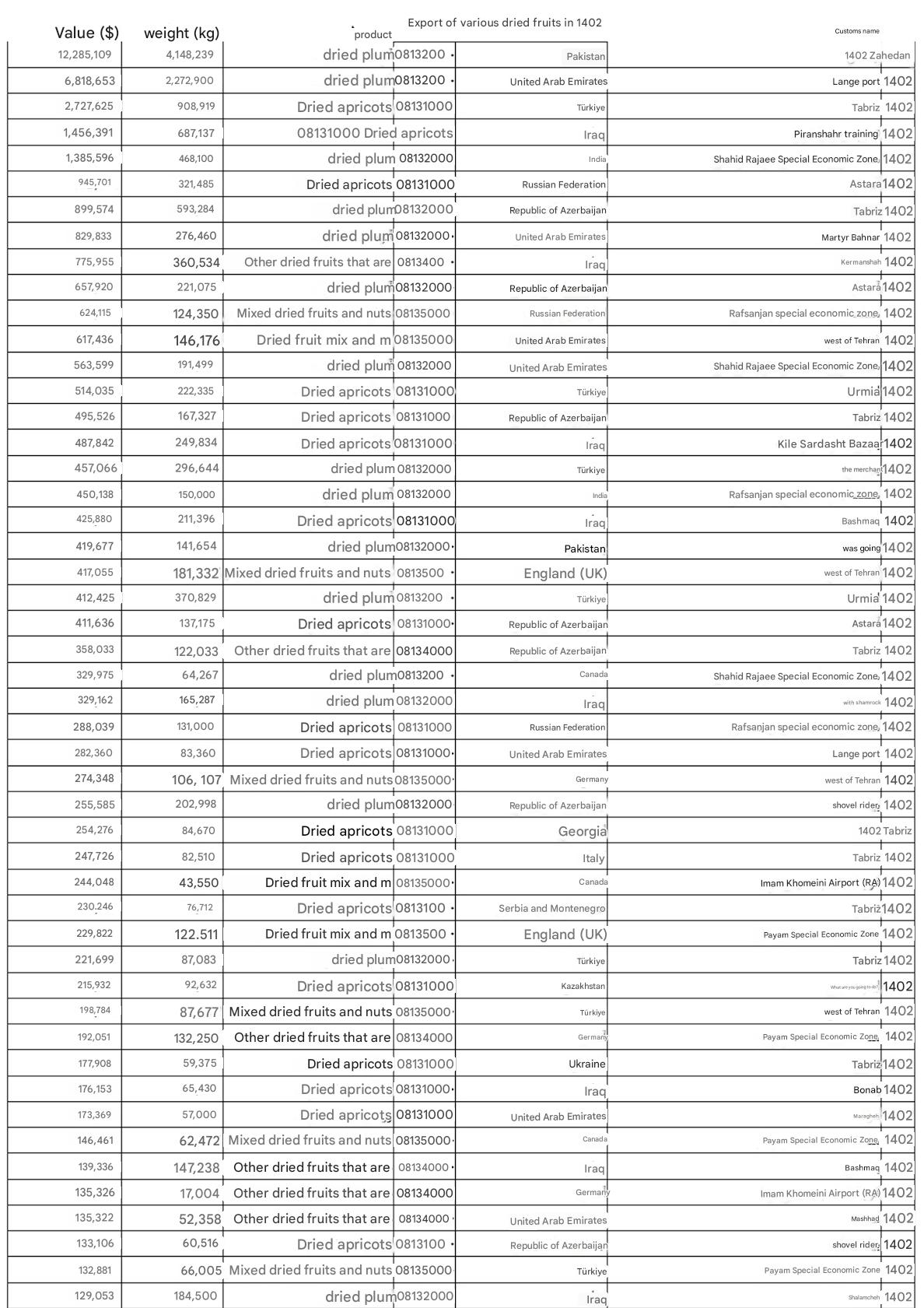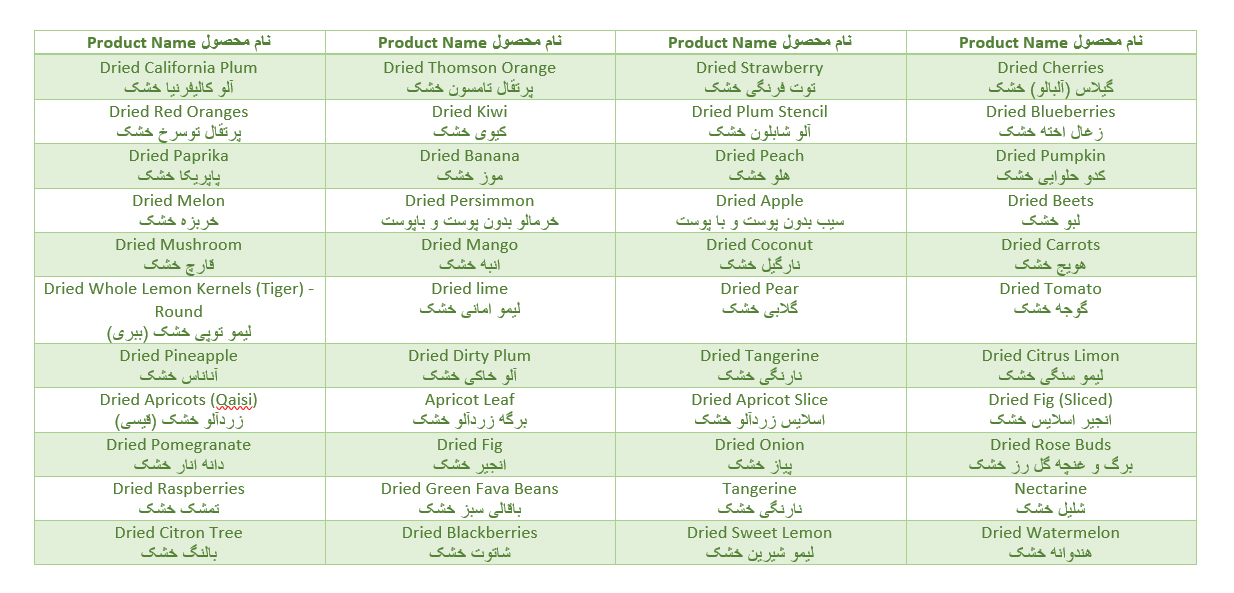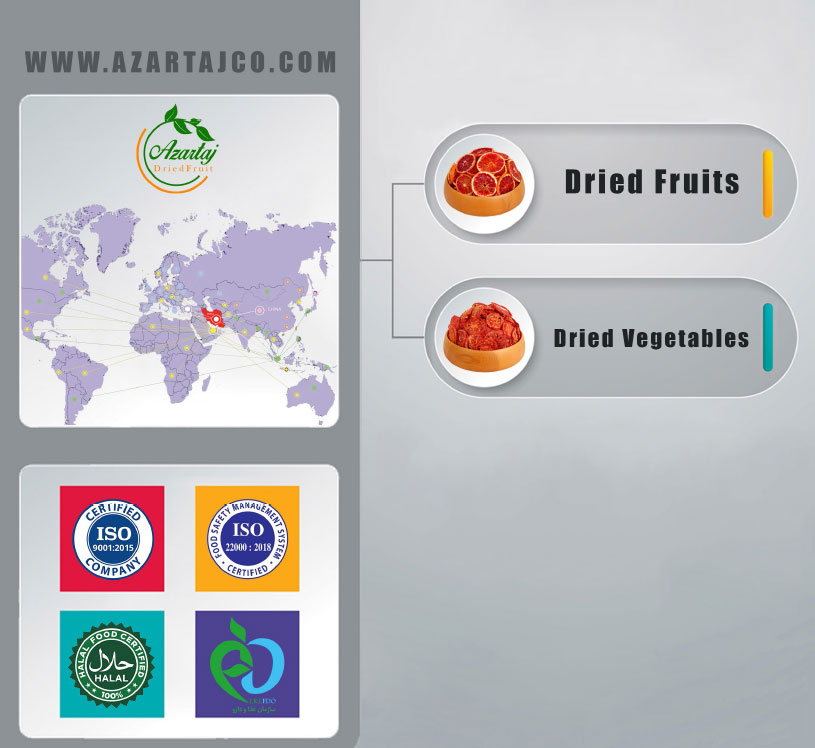When discussing Iranian fruits among people, especially traders and exporters, two important characteristics are often highlighted. First, the diversity of Iranian fruits and their wide range; second, the excellent and delightful taste of these fruits. For example, let’s take apricots (known as “qaisi”). Although Turkey is the largest exporter of various dried fruits in the world and its apricots are well-known globally, the natural and climatic conditions of Iranian apricots give them a better flavor compared to their Turkish counterparts. This has led Turkish traders to import Iranian apricots and export them under the label of Turkish origin. This situation applies to other Iranian fruits as well. In the following sections, we will outline important points regarding the export of dried fruits from Iran.
It is true that this is one of the challenges faced by Iranian exporters, and it can be analyzed from both political (sanctions) and economic perspectives. However, this has not affected the fact that Iranian fruits have superior taste and greater diversity. We can find similar examples in other Iranian products, such as kiwi, but discussing them is beyond the scope of this article.
Now that we have addressed this topic, it is not surprising that the processing industries in Iran, particularly the production of dried fruits, have flourished. Iranian producers have managed to capture a share of the dried fruit export market over several years. According to global statistics from the analytical site Statista, Iran was able to secure a 12% share of the global dried fruit market in 2021-22. This statistic indicates that despite producing 12%, Iran does not hold a favorable ranking or position in dried fruit exports. In this context, the United States, with a production volume of 15%, Turkey with 15%, Saudi Arabia with 7%, and China with 6% follow in the rankings.
Of course, due to the bulk export of Iranian dried fruits to countries like Turkey, there is no precise data on Iran’s share of exports and its position in that regard, primarily because of the high costs associated with branding and packaging. This situation reflects one of the negative consequences of packaging expenses in Iran.
Currently, Turkey ranks first in the global market for dried fruit, with exports amounting to 399 million dollars. Thailand and the United States follow in subsequent positions.
Currently, Iranian dried fruits are exported under the export code (HS Code 0813) to various countries. Below, we have listed the names of the destination countries for Iranian dried fruits. It is evident that there are other countries in this list as well, but they have been omitted due to their lower share.
Export Destinations for Iranian Dried Fruits
• Russia
• United Arab Emirates
• Kuwait
• Turkey
• Iraq
• Oman
• Australia
• Qatar
• Germany
• Poland
• Canada
• Armenia
• Azerbaijan
Statistics on Iran’s dried fruit exports (based on the statistics from the Iranian Customs in 2023)
According to the latest statistics extracted from the customs of the Islamic Republic of Iran, the export value of various dried fruits has reached 48 million dollars. It is important to note that this figure represents official dried fruit exports and does not include unofficial or smuggled exports.
As shown in the table below, the highest volume of dried fruit exports from Iran in the year 1402, with the international code 0813, has come from the following provincial customs:
• Zahedan Customs
• Bandar Lengeh Customs
• Tabriz Customs
• Tamarchin
• Shahid Rajaei
• Astara
• Shahid Bahonar
• West Tehran
• Urmia
• Bazargan
• Rafsanjan
• Bashmaq
• Mirjaveh
The official export amount of Iranian dried fruits is: $48,250,589 (2023)
Table of Iranian Dried Fruits
As mentioned at the beginning of this article, we have prepared a table for you due to the wide variety of Iranian fruits.
Supply of exported dried fruits from Iran
Suppliers of various types of dried fruits from Iran are categorized into two groups: trading companies and manufacturing companies, each with its own advantages and disadvantages. Our recommendation is to collaborate directly with dried fruit producers in Iran to eliminate intermediaries, allowing you to connect directly with the manufacturer and achieve lower overall costs in your trade. Unfortunately, many dried fruit manufacturing companies in Iran have been unable to obtain the international quality certifications required for export. However, the Azartaj dried fruit factory, which produces a wide range of Iranian dried fruits using two methods—dehydrated dried fruits and freeze-dried fruits—has obtained international quality certifications such as Halal certification, Iran’s Health Apple certificate, ISO 9001 certification, and ISO 22000 certification. As a result, it has captured a significant share of the export market for various Iranian dried fruits and exports its products to over 10 countries.
Experience the long-standing tradition of exporting Iranian dried fruits with the Azartaj production group. Domestic and foreign traders can confidently communicate their requests and orders to the sales department of this factory, assured of quality and lower overall costs.
🌟 Buying dried fruit directly from the Azartaj factory
Price list of Iranian dried fruits
Domestic and foreign traders and merchants interested in importing Iranian dried fruits (dehydrated or freeze-dried) can access the latest prices of Iranian dried fruits through the link below.
Note: These prices are based on bulk purchases and include discounts for orders in tonnage. Contact us now to experience a successful collaboration.
🌟 Dried Fruits Price List





